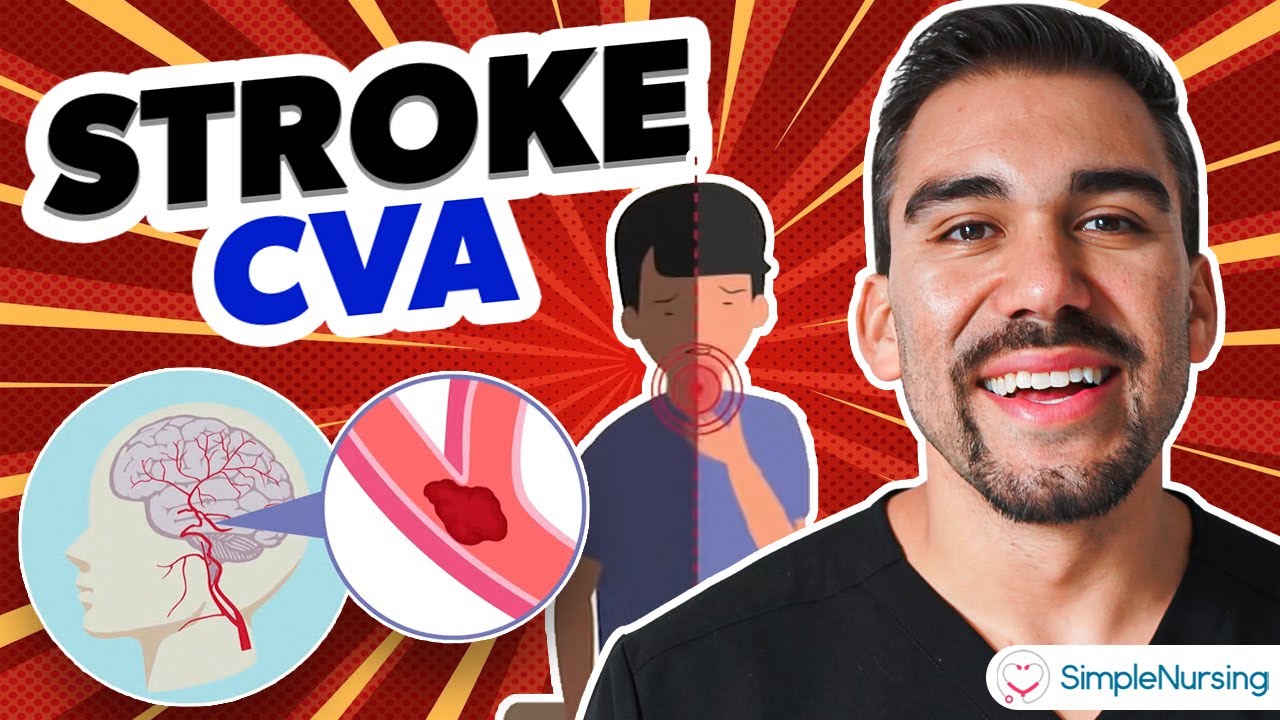O QUE É AVC OU AVE? Entenda o ACIDENTE VASCULAR ENCEFÁLICO e seus fatores de risco (CAIU NA PROVA)
Summary
TLDRIn this educational video, the speaker provides a detailed lesson on stroke (Accidente Vascular Encefálico, AVE), covering both ischemic and hemorrhagic types. The focus is on understanding the causes and risk factors associated with strokes, especially non-modifiable ones like age, sex, ethnicity, and family history, and modifiable ones like hypertension, smoking, and diabetes. The speaker emphasizes how mastering these concepts can help students answer exam questions effectively. Additionally, the video promotes the speaker's website, offering various study materials and resources for those preparing for nursing exams and public health residencies.
Takeaways
- 😀 AVE (Cerebral Vascular Accident) is commonly known as a stroke and is caused by the interruption of blood flow to the brain.
- 😀 There are two main types of AVE: Ischemic (caused by blockage) and Hemorrhagic (caused by blood vessel rupture).
- 😀 Ischemic stroke is more common, accounting for 85% of cases and is often caused by blood clots (thrombosis) or emboli.
- 😀 Hemorrhagic stroke occurs when a blood vessel in the brain ruptures, leading to internal bleeding.
- 😀 Non-modifiable risk factors for AVE include age (especially over 65), sex (men are at a slightly higher risk), ethnicity (African, Hispanic, and Asian descent are at higher risk), and family history.
- 😀 Genetic mutations can also contribute to an increased risk of AVE, as some genetic disorders make individuals more susceptible.
- 😀 Modifiable risk factors that can be controlled include hypertension, smoking, diabetes, heart disease, high cholesterol (dyslipidemia), and obesity.
- 😀 Excessive alcohol consumption and drug use also increase the risk of stroke and are considered modifiable factors.
- 😀 The script includes a sample question from a nursing exam, asking about non-modifiable risk factors for AVE, emphasizing the importance of theoretical knowledge for exam success.
- 😀 In the exam question, factors like hypertension, alcohol consumption, and atherosclerosis were identified as modifiable, while aneurysms and malformations were considered non-modifiable risk factors.
- 😀 The instructor stresses that having thorough theoretical knowledge helps make answering questions in exams easier and more intuitive.
Q & A
What is an Accidente Vascular Encefálico (AVE)?
-An Accidente Vascular Encefálico (AVE), also known as a cerebrovascular accident or stroke, is a medical condition of extreme urgency that occurs when there is an abrupt interruption in blood flow to the brain, leading to a lack of oxygen and nutrients, which can result in brain cell death and neurological dysfunctions.
What are the two main types of AVE?
-The two main types of AVE are ischemic and hemorrhagic. Ischemic occurs when a blood vessel in the brain is blocked, often by a clot. Hemorrhagic occurs when a blood vessel in the brain ruptures, leading to bleeding inside the skull.
What percentage of AVE cases are ischemic?
-Approximately 85% of all AVE cases are ischemic, which happens when a blood vessel is blocked by a clot or an embolism, obstructing blood flow to the brain.
What are the non-modifiable risk factors for AVE?
-Non-modifiable risk factors for AVE include age (especially above 65 years), sex (men are at a slightly higher risk), ethnicity (people of African, Hispanic, or Asian descent are at a higher risk), family history, and genetic mutations.
What are modifiable risk factors for AVE?
-Modifiable risk factors include hypertension, smoking, diabetes, heart diseases, dyslipidemia, obesity, atrial fibrillation, atherosclerosis, excessive alcohol consumption, and drug use. These factors can be managed or changed with medical intervention or lifestyle adjustments.
What is the difference between a thrombus and an embolus in the context of AVE?
-A thrombus is a blood clot that forms within a blood vessel, obstructing blood flow. An embolus is a fragment of material (such as a blood clot, fat, or air bubble) that travels from another part of the body and causes a blockage in a blood vessel in the brain.
What are the two types of hemorrhagic AVE?
-Hemorrhagic AVE can be either intraparenchymal (within the brain tissue) or subarachnoid (between the brain and the membrane covering it), caused by the rupture of a cerebral blood vessel.
How can hypertension affect the risk of AVE?
-Hypertension, or high blood pressure, is the leading cause of hemorrhagic AVE. It increases the risk of blood vessel rupture in the brain, leading to bleeding and stroke.
What is an angiopathy amiloid cerebral and how does it relate to AVE?
-Angiopathy amiloid cerebral is a condition characterized by the accumulation of amyloid proteins in the blood vessels of the brain, which can increase the risk of AVE. This is a non-modifiable risk factor and may contribute to stroke, especially in older individuals.
What is the importance of understanding modifiable and non-modifiable risk factors for AVE in exams?
-Understanding these factors is crucial for answering questions in medical exams related to AVE. Modifiable factors can be controlled with lifestyle changes, while non-modifiable factors cannot be changed, and they help in identifying a patient’s risk profile for stroke.
Outlines

This section is available to paid users only. Please upgrade to access this part.
Upgrade NowMindmap

This section is available to paid users only. Please upgrade to access this part.
Upgrade NowKeywords

This section is available to paid users only. Please upgrade to access this part.
Upgrade NowHighlights

This section is available to paid users only. Please upgrade to access this part.
Upgrade NowTranscripts

This section is available to paid users only. Please upgrade to access this part.
Upgrade NowBrowse More Related Video

Overview of Ischemic and Hemorrhagic Stroke | Clinical Neurology

STROKE Lengkap - Klasifikasi, Patofisiologi, Skor Siriraj, Gajah Mada, Latihan Soal UKMPPD

AVC DO PIRULLA: o que REALMENTE ACONTECEU e COMO EVITAR

What Causes a Stroke?

Stroke CVA (Cerebrovascular Accident) Hemorrhagic, Ischemic NCLEX RN & LPN NURSING

Brain Stroke, Types of, Causes, Pathology, Symptoms, Treatment and Prevention, Animation.
5.0 / 5 (0 votes)